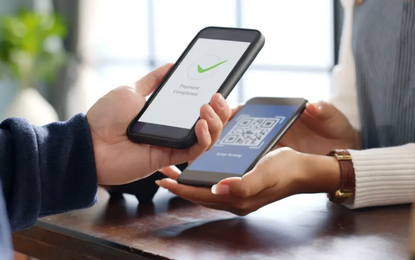

Digital onboarding is the client’s first experience with the company's products and therefore must be accurate, fast, and user-friendly
In a world where virtual transactions are growing steadily and users are demanding simpler, more intuitive, and more efficient processes, allowing customers to open an account digitally is no longer optional for banks.
Digital onboarding is based on the identification and authentication of a new user
. Three main factors are scrutinized: does the identity that’s been submitted exist in the real world, does the digital identity match it, and does it correspond to the person who’s applying?
Multiple services can be contracted
u
sing this technological innovation, and in the financial sector it
means being able to open new bank accounts
without having to go to a branch in person.
It’s a fast, simple, and very useful approach. The practice became especially popular during the pandemic, when lockdowns forced branches to close and
increased the need for mobile and digital financial products
and even for the
distribution of
emergency grants
.
In Argentina, for example, financial inclusion became a matter of survival in 2020 with the sudden onset of the COVID-19 emergency. The government wanted to enforce social distancing, and at the same time, it needed to remotely distribute financial aid to people who were unbanked and to those who had a bank account but didn’t know it.
So, in April of that year,
Banco Provincia launched a free digital wallet—Cuenta DNI—
using a totally digital and user-friendly onboarding process, which led to a rapid take-up by millions of users who gained access to financial resources when they needed them
most.
Now, even with bank branches back to normal,
remote customer onboarding continues to be extremely popular
since users have already adapted to the new system and don’t need to visit a physical branch to access the services of their preferred institution.
Digital solutions are becoming more
relevant for financial institutions and are on the rise
. For example,
reported that 54% of its global sales were made through digital channels in 2021 compared to 44% in 2020. And it reached more than 47 million customers, an annual increase of 12%.
Digital onboarding not only harnesses technological capabilities but also empowers the user by allowing them to decide where and when they want to initiate the relationship with their chosen institution.
It’s a golden opportunity to create long-lasting bonds.
But like any good opportunity, it’s very unlikely to present itself twice. That's why it must be seized upon from the start. Here are four
keys to successful digital onboarding for banks:
Thanks to
,
customer information can be verified remotely
. This tool makes it possible to analyze an individual’s physical features to confirm his or her identity, and it’s almost infallible.
It has other benefits too, such as
frictionless onboarding and access to applications
.
You can use a selfie, a video, a video call or even a regular call to verify the user's voice.
Liveness detection—the ability to verify whether a user’s fingerprint,
and/or face are real and belong to a live person at the location where it’s being recorded—makes
operations even more secure.
It’s not just essential to have an accurate identity verification but also to have a
high level of security, both for the customer and the financial institution
. The onboarding process also needs to comply with local Know Your Client (KYC) standards as well as a list of monitoring procedures to ensure that
customers are who they say they are
and that their funds aren’t of an illicit origin, in order to prevent identity fraud or consumer data leaks.
Effective digital onboarding must be very fast,
as online customers tend to lose interest quickly and abandon the process.
Rappi argues that onboarding should ideally take no more than a couple of minutes. With that, the delivery giant throws down a challenge to the traditional financial system: make the onboarding as easy as ordering a cheeseburger.
However, we must keep in mind that this is not a trivial process like buying something online, and security standards cannot be compromised.
There needs to be a
balance between attracting more customers and saving time and costs, while in parallel, still providing security and complying with regulations
.
is truly the key that sets the digital process apart from the face-to-face process. Saving time and resources and user-friendliness are its core strengths.
From the applications’ design to the flow of information,
everything must be evaluated in order to achieve a superior UX. The customer's journey, preferences and needs will determine the layout of the interface, which must be intuitive and enjoyable.
The user must also be properly guided throughout the whole process, and support or help channels must remain open, be they telephone, email, or text message.
Chatbots, or virtual assistants,
are another excellent way to assist future customers with contracting your products.
While efforts should be made to
keep all processes fully digital
, some banks still require branch visits for signatures. This can interrupt the experience and therefore devalue it. That’s why, as long as legislation does not impede it,
alternative solutions such as electronic signatures should be utilized to ensure the digitalization of the process.
It’s also worth noting that onboarding is a
unique opportunity to get to know the customer better,
so adding a few brief questions about product preferences and expectations will be useful to customize the tools.
The bank's value proposition should be highlighted in a timely manner
,
reminding the potential user why they should place their trust—and their resources—with that institution.
The data collected during the user onboarding process will also be used to offer upgrades to the products acquired, as well as to update services and adapt them to the user's lifestyle and needs.
This shift towards hyper-personalization empowers the user to modify the settings of their banks’ application, such as security data, contact details or product preferences, allowing them to prioritize what matters most and enabling the institution to provide a better solution.
Join our online community and stay up to date with the latest news from the world of technology.